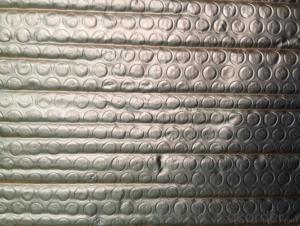Plywood Foam Sandwich Panels: Combining Plywood and Foam for Insulation
Imagine waking up to a cozy home, feeling the warmth radiating from the walls, and realizing it’s not just the heater doing all the work. Plywood foam sandwich panels are the unsung heroes behind the scenes, silently working to keep your home insulated and comfortable. These panels are a marriage of two materials: plywood and foam, creating a perfect blend of strength, durability, and insulation. Let’s dive into the world of these innovative panels and explore their benefits, applications, and how they’re made.
The Magic of Plywood and Foam
Plywood, known for its versatility and strength, is a popular choice for construction and furniture making. On the other hand, foam, with its lightweight and insulating properties, is often used in various industries. Combining these two materials results in a product that is not only robust but also energy-efficient. The plywood foam sandwich panel is designed to provide thermal insulation, reduce noise, and increase the structural integrity of buildings.
Benefits of Plywood Foam Sandwich Panels
Enhanced Insulation
One of the primary benefits of these panels is their ability to insulate. They create a barrier that prevents heat transfer, keeping your home warm in the winter and cool in the summer. This not only enhances comfort but also reduces energy consumption, leading to lower utility bills.
Noise Reduction
Living in a bustling city can be noisy, and sometimes, you just want some peace and quiet. Plywood foam sandwich panels can help with that. They absorb sound, reducing noise pollution and creating a more serene environment within your home.
Structural Strength
The combination of plywood and foam adds to the structural strength of the panels. Plywood provides rigidity, while foam adds flexibility, making these panels ideal for various applications, from walls to ceilings and even flooring.
Aesthetic Appeal
These panels are not just functional; they also have an aesthetic appeal. They can be painted, stained, or left natural, depending on your preference. This versatility in design allows them to blend seamlessly into any home décor.
Applications of Plywood Foam Sandwich Panels
Residential Construction
In residential construction, these panels are used for walls, ceilings, and roofs. They provide insulation, reduce noise, and enhance the overall structural strength of the building.
Commercial Construction
Commercial buildings, with their large spaces and high traffic, can benefit from the durability and insulation properties of these panels. They are used in office spaces, shopping centers, and even in the construction of temporary structures.
Industrial Applications
Industries that require soundproofing or thermal insulation often use these panels. They are perfect for factories, warehouses, and any environment where noise and temperature control are essential.
How Are They Made?
The process of making plywood foam sandwich panels involves several steps. First, the plywood layers are cut to size. Then, a layer of foam is placed between two plywood layers, creating a sandwich-like structure. The layers are then bonded together using adhesives that are resistant to heat and moisture. This ensures the panels are durable and long-lasting.
Installation and Maintenance
Installing these panels is relatively straightforward. They can be attached to the building structure using various methods, such as screws, nails, or adhesives. Maintenance is also easy, as the panels are resistant to water, mold, and pests. A simple cleaning with a damp cloth is usually enough to keep them looking fresh.
The Future of Insulation
As we move towards a more sustainable future, the demand for energy-efficient and environmentally friendly materials is on the rise. Plywood foam sandwich panels are a step in the right direction, offering a solution that is both practical and eco-friendly.
Conclusion
Plywood foam sandwich panels are a testament to the power of combining two materials to create something greater than the sum of their parts. They offer a range of benefits, from enhanced insulation and noise reduction to structural strength and aesthetic appeal. Whether you’re building a new home or renovating an old one, these panels are a smart choice for anyone looking to create a comfortable, energy-efficient, and stylish living space.

